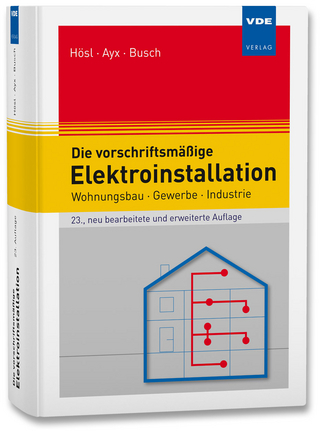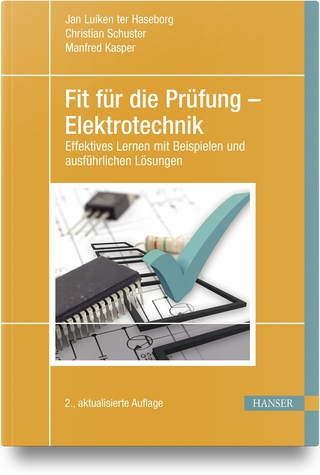
Metallic Films for Electronic, Optical and Magnetic Applications
Woodhead Publishing Ltd (Verlag)
978-0-85709-057-7 (ISBN)
- Titel ist leider vergriffen;
keine Neuauflage - Artikel merken
Metallic films play an important role in modern technologies such as integrated circuits, information storage, displays, sensors, and coatings. Metallic Films for Electronic, Optical and Magnetic Applications reviews the structure, processing and properties of metallic films.
Part one explores the structure of metallic films using characterization methods such as x-ray diffraction and transmission electron microscopy. This part also encompasses the processing of metallic films, including structure formation during deposition and post-deposition reactions and phase transformations. Chapters in part two focus on the properties of metallic films, including mechanical, electrical, magnetic, optical, and thermal properties.
Metallic Films for Electronic, Optical and Magnetic Applications is a technical resource for electronics components manufacturers, scientists, and engineers working in the semiconductor industry, product developers of sensors, displays, and other optoelectronic devices, and academics working in the field.
Katayun Barmak is a Professor in the Department of Applied Physics and Applied Mathematics, Columbia University, USA. Kevin Coffey is a Professor in the Department of Materials Science and Engineering, the University of Central Florida, USA.
Contributor contact details
Woodhead Publishing Series in Electronic and Optical Materials
Preface
Part I: Structure and processing of metallic films
1: X-ray diffraction for characterizing metallic films
Abstract
1.1 Introduction
1.2 Reciprocal space
1.3 Phase identification
1.4 Chemical order in binary alloys
1.5 Defects
1.6 Epitaxy and texture
1.7 Experimental methods
1.8 Conclusion and future trends
2: Crystal orientation mapping in scanning and transmission electron microscopes
Abstract
2.1 Introduction
2.2 Electron backscatter diffraction (EBSD) in the scanning electron microscope (SEM)
2.3 Extraction of relative grain boundary energy from EBSD crystal orientation maps
2.4 Analysis of grain boundary plane distribution (GBPD) from EBSD crystal orientation maps
2.5 Precession electron diffraction (PED) in the transmission electron microscope (TEM)
2.6 Determination of grain boundary character distribution (GBCD) from PED crystal orientation maps
2.7 Trace analysis of PED crystal orientation maps
2.8 Conclusion and future trends
3: Structure formation during deposition of polycrystalline metallic thin films
Abstract
3.1 Introduction
3.2 Structural aspects of polycrystalline thin films
3.3 Main aspects of the physical vapour deposition (PVD) preparation methods applied for the synthesis of polycrystalline metallic thin films
3.4 Synthesized view of the structure evolution in polycrystalline thin films
3.5 Fundamental phenomena of structure evolution
3.6 Case studies
3.7 Conclusion
3.8 Acknowledgements
4: Post-deposition grain growth in metallic films
Abstract
4.1 Introduction
4.2 Normal and abnormal grain growth
4.3 How is grain size measured in thin films?
4.4 Stagnation of grain growth and the ‘universal’ experimental grain size distribution
4.5 Theory and simulation of curvature-driven growth in two dimensions
4.6 Comparison of experiments and two-dimensional simulations of grain growth with isotropic boundary energy
4.7 Reduction of surface and elastic strain energies
4.8 Anisotropy of grain boundary energy
4.9 Grain boundary grooving
4.10 Solute drag
4.11 Triple junction drag
4.12 Conclusion
5: Fabrication and characterization of reactive multilayer films and foils
Abstract
5.1 Introduction
5.2 Background on self-sustaining reactions and reactive multilayer films and foils
5.3 Fabrication of reactive multilayer films and foils
5.4 Microstructures, chemistries and geometries of reactive multilayers
5.5 Chemical energies stored within reactive multilayer films and foils
5.6 Thresholds for the ignition of self-propagating reactions
5.7 Reaction propagation, analytical models, and maximum temperatures
5.8 Numerical predictions of reaction propagation: steady and unsteady
5.9 Observations and predictions of rapid intermixing and phase transformations
5.10 Applications of reactive multilayer foils
5.11 Conclusion and future trends
5.12 Sources of further information and advice
5.13 Acknowledgements
6: Metal silicides in advanced complementary metal-oxide-semiconductor (CMOS) technology
Abstract
6.1 Introduction
6.2 State of the art of complementary metal-oxide-semiconductor (CMOS) technology
6.3 Silicide formation
6.4 Electrical contacts
6.5 Conclusion and future trends
6.6 Acknowledgments
7: Disorder–order transformations in metallic films
Abstract
7.1 Introduction
7.2 The Fe-Pt system
7.3 The A1 to L10 transformation in FePt
7.4 Differential scanning calorimetry (DSC) studies of the A1 to L10 transformation in FePt
7.5 The A1 to L10FePt transformation kinetics: the Johnson–Mehl–Avrami–Kolmogorov (JMAK) model
7.6 The A1 to L10 transformation in FePt: the growth mechanism
7.7 Derivation of expressions for the fraction transformed for three nucleation conditions
7.8 The application of the JMAK expressions for the three nucleation conditions to the A1 to L10 phase transformation in FePt and related ternary alloy films
7.9 Time–temperature–transformation (TTT) diagrams
7.10 Fraction transformed and TTT diagrams for ultrathin films
7.11 Conclusion
Part II: Properties of metallic films
8: Metallic thin films: stresses and mechanical properties
Abstract
8.1 Introduction
8.2 Mechanics of thin films and substrates
8.3 Measurement of stresses in thin films
8.4 Physical origins of stresses in thin films
8.5 Intrinsic stresses in vapor deposited polycrystalline films
8.6 Evolution of stresses in films during processing
8.7 Techniques for studying mechanical properties of thin films
8.8 Mechanisms controlling strength and plasticity of thin films
8.9 Conclusion
9: Electron scattering in metallic thin films
Abstract
9.1 Introduction
9.2 Electrical conduction and the Boltzmann transport equation
9.3 Quantitative resistivity size effect models
9.4 Experimental review
9.5 Conclusion
10: Magnetic properties of metallic thin films
Abstract
10.1 Introduction
10.2 Magnetic properties
10.3 Anisotropy in thin films
10.4 Magnetization processes in thin films
10.5 Measuring magnetic thin films
10.6 Highly engineered materials
10.7 Development of enhanced magnetic thin films
10.8 Applications of magnetic thin films
10.9 Non-metallic magnetic thin films
10.10 Conclusion
11: Optical properties of metallic films
Abstract
11.1 Introduction
11.2 The Drude and Sommerfeld models
11.3 Deviations from the Drude–Sommerfeld model due to electronic band structure
11.4 Optical properties of metallic thin films at infrared frequencies
11.5 Optical skin effects in thin metallic films
11.6 Experimental illustration of the skin effect
11.7 Carrier transport in optical versus radio frequency regimes
11.8 Surface-plasmon polaritons
11.9 Metamaterials
11.10 Nanoantenna infrared sensors
11.11 Conclusion
12: Thermal properties of metallic films
Abstract
12.1 Introduction
12.2 Thermal conductivity in metallic films and the Wiedemann–Franz law
12.3 Experimental methods
12.4 Results and theoretical analysis for thin films
12.5 Conclusion
Index
| Reihe/Serie | Woodhead Publishing Series in Electronic and Optical Materials |
|---|---|
| Verlagsort | Cambridge |
| Sprache | englisch |
| Maße | 156 x 234 mm |
| Gewicht | 1110 g |
| Themenwelt | Technik ► Elektrotechnik / Energietechnik |
| ISBN-10 | 0-85709-057-7 / 0857090577 |
| ISBN-13 | 978-0-85709-057-7 / 9780857090577 |
| Zustand | Neuware |
| Haben Sie eine Frage zum Produkt? |
aus dem Bereich


